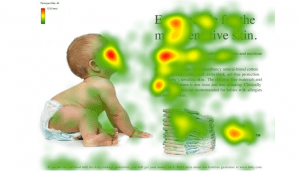How do you best understand why consumers choose your brand versus a competitor’s (or vice versa)? Research tools such as focus groups, interviews, and surveys provide unique and helpful insights. Yet each have limitations that prevent us from obtaining a comprehensive understanding of the behaviors, needs, and preferences that influence the consumer decision-making process.
Neuromarketing is often defined as the future of marketing because it works to understand the subconscious behaviors of consumers. It’s becoming more and more apparent that this plays a key role in our ability to understand and discover underlying consumer needs, wants, motivations, and preferences.
In this article, we’ll answer the burning questions behind neuromarketing, such as:
What exactly is neuromarketing?
What tools and techniques are used for neuromarketing?
Why is neuromarketing so important?
Is it a trendy buzzword, or is neuromarketing changing the future of marketing?
Neuromarketing Defined + Its Impact on Marketing
What exactly is neuromarketing?
By applying the combination of neuroscience and cognitive science to traditional marketing, we are able to augment our marketing endeavors for better results and greater success. This involves studying the subconscious responses and behaviors of the human brain and body when encountering marketing, branding, advertising, packaging, etc.
The study of subconscious behavior reveals information that can’t be derived from traditional forms of consumer and market research. For example, monitoring neurological responses can help us understand ad effectiveness and product desirability as well as give insights into attitudes towards price or emotions triggered by promotions.
This gives marketers a greater sense of how to create brands, marketing materials, campaigns, and innovations that are more effective and are designed to better resonate with their target audiences.
The Techniques/Tools Used for Neuromarketing
What tools and techniques are used for neuromarketing?
There are a variety of tools and techniques used to perform neuromarketing studies. In this section, we briefly describe several of these tools and how they’re used.
fMRI (Functional Magnetic Resonance Imaging) – Technically known as functional magnetic resonance imaging, fMRI is used to detect blood flow in the brain associated with increased neural activity. The technology observes changes in oxygenated blood flow in response to cognitive tasks. This type of technology can measure certain levels of consumer engagement; for example, fMRIs can be used to gauge how consumers feel about factors such as price. It’s important to note that this kind of machinery is expensive–and testing must be performed in a lab with the participant lying still inside a machine–so fMRI isn’t as easily accessible or convenient as other neuromarketing tools.
EEG (Electroencephalogram) – Known as a more cost-effective alternative to the fMRI, the EEG is a neuroscience tool that provides valuable information on brain activity. EEGs are a non-invasive electrophysiological brain imaging technique in which values of marketing stimulus can be evaluated for metrics such as memory, engagement, positive/negative perception, and attention. The equipment is lightweight, portable, and comfortable to wear. Participants’ natural behaviors are captured using sensors applied to the scalp to measure brain-generated electrical waves.
Eye-Tracking – This technique, just as the name implies, measures eye movements and tracks where subjects move their gaze. Eye tracking is useful to analyze what captures consumers’ attention, what confuses them, and how fast they can recognize brand elements. This technology cannot measure emotion, so it should be used in addition to techniques such as biometrics to get a full understanding of the subconscious mind. There are a variety of eye-tracking devices, such as stationary eye-trackers, eye-tracking glasses, eye-tracking virtual reality glasses, and eye-tracking through webcams (although webcam eye-tracking is the least precise of all the devices). Because these devices are so affordable and easy to use, eye-tracking is one of the most common techniques used in neuromarketing research.
Pupillometry – This is an eye-tracking technique used to measure the dilation of the subject’s pupils. Marketers can use the results to determine how engaging their marketing creative and communications are. Increased dilation can indicate that participants are more entertained or engaged by the testing materials. Luminance (lighting) changes occurring during testing will also affect pupil dilation, so pupillometry testing must be highly controlled in order to deliver accurate data.
Biometrics – For years, marketing researchers have employed biometrics to measure physical responses to different stimuli, such as online and digital experiences, television, messaging, print advertising, products, and services. This neuroscience technology measures skin conductance, heart rate, and respiration to determine how consumers feel about and respond to marketing media.
Facial Coding – The Facial Action Coding System (FACS) is a software that measures subtle changes in facial expressions. This technology is used to measure a range of emotions (such as anger or happiness) and emotional valence (positivity and negativity). This cost-effective neuroscience tool can help marketers understand brand perception and consumer emotions in response to marketing stimuli. It’s important to note that, although this technique is considered to have a lot of potential, some professionals feel that it is more subjective and less reliable than other neuromarketing tools.
Why Neuromarketing Is Important
Why is neuromarketing so important?
Let’s be real. Most of us don’t put a lot of time into thinking about why we buy what we buy. And if we aren’t sure about the why, how accurate can our responses be in surveys and feedback?
The purpose of neuromarketing is to uncover authentic reasoning and purpose behind consumer decisions and behaviors. We seek to analyze the subconscious part of the human psyche in order to truly understand why we purchase particular products and services (and why we don’t). By focusing on the behavioral sciences, we are able to bypass conscious bias and identify automatic reactions that tend to be universal across all human beings.
In other words:
Neuromarketing brings us one step closer to understanding the true intentions behind consumer decision-making.
By gathering a shared understanding of human behavior, marketers can use their talents to deliver creative and messaging that better attracts, engages, and aligns with their target audiences, their preferences, and their needs.
Examples of Neuromarketing
The subject of neuromarketing can be a bit overwhelming if not paired with practical examples for reference. Below are a couple of studies that show the benefits neuromarketing using eye-tracking and fMRI tools:
Eye-tracking Utility Study
Usability Specialist James Breeze conducted a study to see how people view baby ads. When the subjects were presented an ad with the baby staring straight at the camera, the eye-tracking heatmap indicated that viewers’ attention were completely focused on the baby’s face and not the marketing messaging.

When the viewers were presented with another ad where the baby was facing the messaging, the results were very different. While the baby still garnered attention, the marketing messaging did as well, simply due to the fact that the baby was looking at it.

The takeaway? As humans, we’re drawn to, and take more notice of, people looking straight at us—especially if the person staring is an adorable baby! To ensure that your audience assimilates the imagery and messaging equally—and in the right order—it’s important to incorporate visual hierarchy into the design. And if you’re using people in your ads, consider the benefit of them looking at, and/or or in some way bringing attention to, important messaging.
fMRI Study – National Cancer Institute
The National Cancer Institute performed an interesting neuromarketing study using fMRI technology to determine the effectiveness of an ad campaign. In the study, thirty-one participants were shown three different ads. Each ad included messaging that encouraged those who wanted to quit smoking to call the Institute’s hotline.
The participants were asked to write a self-report in which they ranked the ads in order of least to most favorite. A 3-T Siemens Trio scanner was used to provide imaging data of each person’s neural activity when viewing the ads.
In addition to this, the Institute also measured the number of calls the hotline received after each ad was aired. The study determined that the ad with the highest neural response was also the ad that yielded the greatest number of calls. The interesting part is that these results contradicted the self-report rankings the participants filled out.
This study and others like it are important, proving that consumer surveys, focus groups, and feedback aren’t always accurate or reliable. Neuromarketing works to uncover subconscious desires and preferences that consumers are simply unaware of, which helps marketers communicate with their target audiences more effectively.
The Takeaway
Is it just a trendy buzzword, or is neuromarketing changing the future of marketing?
Neuromarketing has indeed influenced the future of marketing. Such an in-depth understanding of consumer wants, desires, and preferences empowers innovators and marketers with a greater ability to meet the needs of their customers.
At IDealogic®, we believe there are long-term benefits—for both companies and their target audiences—when brands can connect to consumers on a deeper, more meaningful level. We focus on building profitable relationships between companies and the people who purchase from them. Schedule your introduction call today to learn more about how we can help your organization create Brand to Human® connections with ideal consumers.


